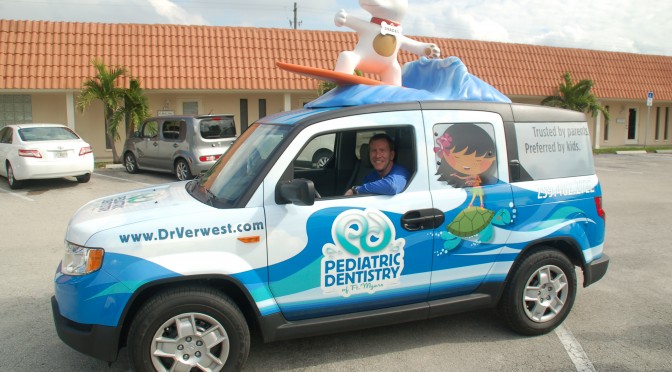5 Benefits of Visiting a Pediatric Dentist
The Difference Let’s face it – for some in past years visiting the dentist wasn’t the most fairy tale experience. Put your mind to[…]
Bad Breath, Be Gone!
So how do you keep good smelling breath to stick around longer? We have a few tips to keep you and your mouth smelling fresh[…]
Sugarless Gum is a Tooth’s Bestfriend
Having a munch on some sugarless gum can have some benefits for keeping your smile spotless! Not only does it remove any food particles from[…]
Why Tongue Scrapers and Cleaners are Important
You may not always think of going the extra mile to clean your tongue but the benefits from doing so may be worth it. The[…]
What Makes Me Smile Art Exhibit
– Pediatric Dentistry of Ft. Myers, Dr. Tim Verwest, DMD is offering children 18 years or under a chance to create works of art centered[…]

Local Dentist Recognized as America’s Best Dentist for 2016
The National Consumer Advisory Board has named Pediatric Dentistry of Ft. Myers, Dr. Tim M. Verwest, DMD one of America’s Best Dentist for 2016. Selections[…]
Holiday sweets can be tough on teeth
The winter holidays are known for sweet treats and tempting goodies, but that doesn’t mean that you have to end up at the dentist with[…]
Dentists’ candy buyback nets over 400 pounds of sweets
Pediatric Dentistry of Ft. Myers, Dr. Tim Verwest, DMD collected over 400 pounds of candy during their Halloween cash for my candy buyback program. The[…]
Sealants Critical to Children’s Oral Health
Sealants are plastic coatings that protect those difficult to reach pits and grooves on the chewing surfaces of the teeth from the bacteria that cause[…]
Manual or Electric Toothbrush?
In recent years electric toothbrushes have gained increasing popularity among young adults and children. Some parents have questioned if electric toothbrushes work better than just[…]
